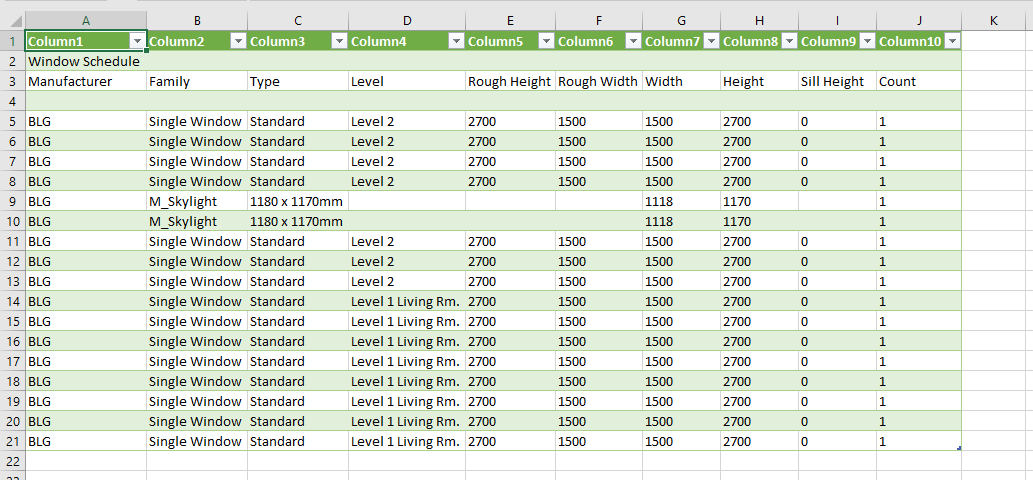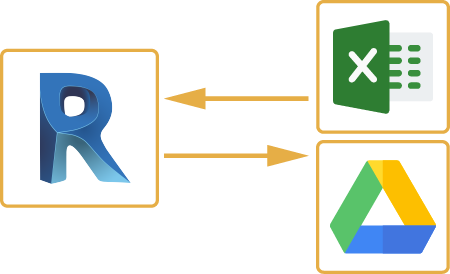Revit Tool to Empower Your Building Details Modeling
Wiki Article
Excel Empowerment: Supercharge Your Revit Projects With Seamless Data Import
Are you wanting to supercharge your Revit tasks? With seamless information import, Excel empowerment can be the trick to unlocking your project's full capacity. Visualize improving the import process and making the most of efficiency via seamless data combination. In this short article, we will certainly share suggestions and methods for making use of Excel in your Revit projects. Discover just how utilizing the Excel-Revit connection can cause success in your tasks. Prepare yourself to take your Revit projects to the following level with Excel empowerment.The Power of Excel in Revit Projects
You can supercharge your Revit projects by using the power of Excel for seamless information import. Excel is a functional device that can greatly improve your workflow and performance in Revit (revit add ins). With Excel, you can quickly import and handle huge amounts of information, conserving you effort and timeAmong the essential benefits of making use of Master Revit is its ability to deal with complex calculations and formulas. You can make use of Excel to perform calculations on your data, such as generating quantities, calculating prices, or assessing efficiency. When functioning with huge projects that require considerable calculations., this can be specifically useful.

Additionally, Excel provides a acquainted and user-friendly interface for working with data. You can organize and control your data in a spreadsheet layout, making it simple to watch and edit. When collaborating with others or when you need to make fast adjustments to your project information., this can be especially valuable.
In addition, Excel permits you to easily import and export data in between Revit and other software program applications. You can import data from outside sources right into Revit, such as product specifications or equipment schedules, and export data from Revit to Excel for further analysis or reporting.
Streamlining Data Import With Master Revit
Improving information import in Revit becomes easier when utilizing Excel as a tool. With Excel, you have the power to seamlessly import and manage large amounts of data in your Revit tasks. By making use of the acquainted interface and functionality of Excel, you can conserve time and boost efficiency in your operations.Among the essential benefits of making use of Excel for information import in Revit is the ability to quickly arrange and adjust data before importing it right into your project. With Excel's effective attributes, such as sorting, filtering, and solutions, you can swiftly clean up and format your data to fulfill the demands of your Revit task.
Furthermore, Excel permits you to import information from various sources, such as data sources, spread sheets, or also online applications. This adaptability provides you the liberty to collect data from various systems and settle it right into one main location for simple accessibility and administration.
Furthermore, Excel gives the alternative to develop custom-made design templates for information import in Revit. By developing themes customized to your job's specific requirements, you can ensure uniformity and accuracy in your information import procedure.
Total, using Excel as a tool for data import in Revit streamlines the procedure and boosts your performance. Why not take advantage of this powerful tool and supercharge your Revit tasks with smooth data import making use of Excel?
Maximizing Efficiency With Seamless Information Combination
Optimize performance by perfectly integrating and handling data in your operations. Gone are the days of by hand inputting information right into your system, wasting valuable time and resources. With smooth data integration, you can streamline your processes and supercharge your performance.
Managing data ends up being a breeze when you have a seamless assimilation system in position. You can conveniently arrange and categorize your data, making it much easier to obtain and assess. Bid farewell to the days of undergoing limitless spreadsheets for that piece of information you require.

Excel Advice for Revit Projects
With these pointers and tricks, you'll be able to effectively manage your Revit projects making use of Excel. One of the first points you can do is to use Excel's effective sorting and filtering functions. This will certainly permit you to rapidly arrange and evaluate your task data. You can sort components by their names or filter them based on particular standards, such as their condition or location. Another beneficial attribute is the ability to create formulas in Excel. You can utilize formulas to compute quantities, do complex calculations, and also automate specific tasks. This can conserve you a great deal of time and initiative in your Revit jobs. Furthermore, you can use Excel to develop custom-made layouts for data import and export. This method, you can guarantee uniformity and accuracy when moving data in between Revit and Excel. Do not neglect concerning Excel's conditional formatting function. You can use this to highlight particular elements or values based on certain conditions. This can aid you promptly recognize and deal with any kind of problems or anomalies in your project information. On the whole, understanding these Excel tips and tricks will significantly improve your ability to manage and manipulate information in your Revit jobs.Harnessing the Excel-Revit Connection for Success
To maximize your Excel-Revit link, capitalize on the capacity to effortlessly move and synchronize task details. By using this effective connection, you can supercharge your Revit projects and streamline your process. With just a few straightforward actions, you can import data from Excel straight into Revit, conserving you time and making sure precision.One of the essential advantages of the Excel-Revit link is the capability to transfer information seamlessly. Whether you are importing timetables, space information, or even geometry information, Excel gives an user-friendly interface that enables you to organize and manipulate your information before importing it into Revit. This means you can quickly upgrade and customize your project information in Excel, and with a few clicks, move those adjustments directly right into your Revit version.
Along with transferring information, the Excel-Revit connection also permits synchronization. This implies that any modifications made in Excel can be automatically updated in Revit, ensuring that your task information is always as much as day. This synchronization feature is particularly helpful when taking revit add ins care of complicated and large projects, as it removes the need for hands-on information entry and reduces the risk of errors.
Verdict
By streamlining information import and making best use of performance through seamless data integration, you can supercharge your projects and attain success. Do not wait any type of longer, begin utilizing the power of Excel in your Revit projects today and unlock a globe of possibilities.You can supercharge your Revit tasks by harnessing the power of Excel for seamless information import. With Excel, you have the power to flawlessly import and take care of large quantities of information in your Revit tasks (revit tools). On the whole, mastering these Excel tips and techniques will greatly boost your ability to manage and control data in your Revit tasks
Whether you are importing timetables, room data, or even geometry info, Excel provides a straightforward user interface that enables you to arrange and adjust your data before importing it into Revit. By improving data import and making best use of efficiency with seamless data integration, you can supercharge your jobs and accomplish success.
Report this wiki page